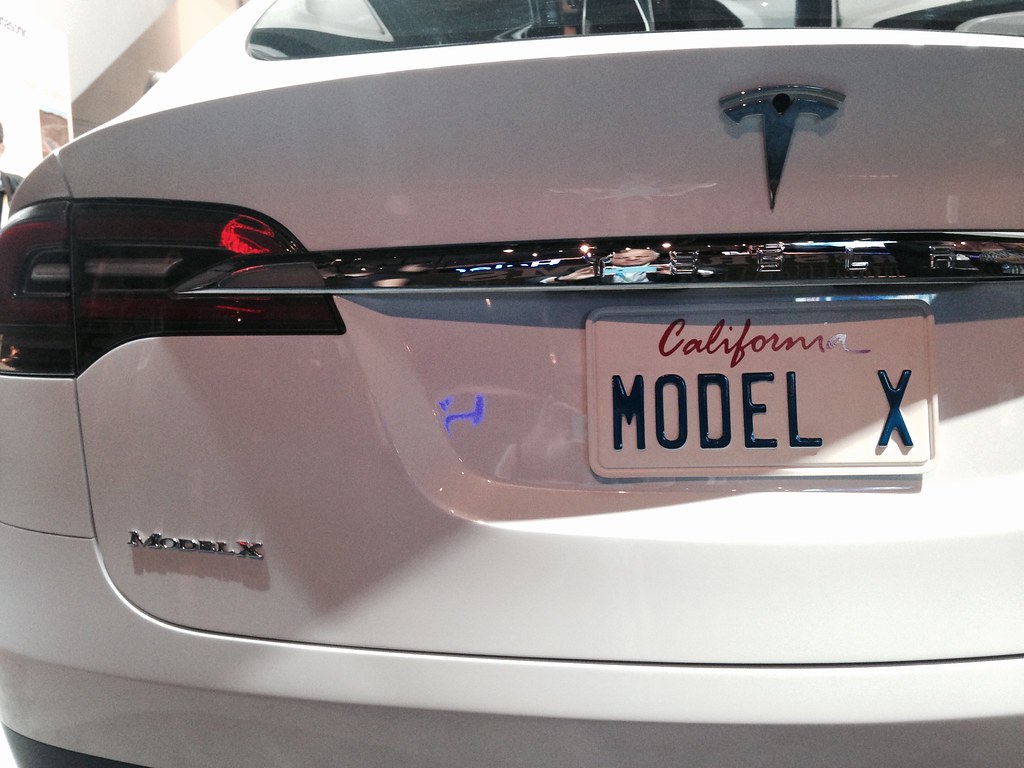
The automotive industry is currently navigating a period of significant transformation, particularly within the electric vehicle (EV) segment, where market dynamics are evolving rapidly. Amidst this flux, Tesla, a dominant force in the EV market, has recently introduced strategic pricing adjustments that are sending ripple effects across both new and used car markets. These developments signal a crucial juncture for the company and the broader industry, influencing consumer choices, investor sentiment, and competitive strategies.
These shifts are not isolated events but rather components of a complex interplay of factors, including regulatory changes, intensified competition, and the inherent depreciation characteristics of electric vehicles. As the market matures and consumer preferences adapt, understanding these forces becomes paramount for stakeholders. This in-depth analysis delves into the initial implications of Tesla’s latest moves, exploring how new model introductions, expiring incentives, and competitive pressures are reshaping the landscape for the world’s leading EV manufacturer.
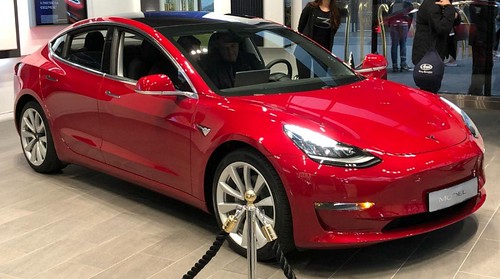
1. **Unveiling, Pricing, and Market Availability of New “Standard” Tesla Models**Tesla has recently introduced more accessible versions of its two primary vehicles, the Model 3 Standard and Model Y Standard, a move that follows extensive anticipation for more budget-friendly options. The Model 3 Standard is priced at $38,630, inclusive of destination and order fees, with an estimated availability in December or January. This pricing positions it as a more affordable entry point into the Tesla sedan lineup.
Similarly, the Model Y Standard will commence at $41,630, encompassing destination and order fees, and is projected to be available in November or December. These new offerings are $5,500 less than the previously least expensive “Premium” Model 3 and $5,000 less than the Premium Model Y, marking a notable reduction in upfront cost for consumers seeking a new Tesla vehicle.
Announced via CEO Elon Musk’s social media platform, X, these models aim to broaden Tesla’s market appeal. The company’s strategy appears to be an attempt to stimulate demand following a period where sales were artificially bolstered by impending tax credit expirations. These vehicles are designed to bring Tesla’s offerings closer to the price points of comparable gasoline-powered vehicles, thereby addressing a critical barrier to wider EV adoption.
Car Model Information: 2019 Honda Accord Sport 2.0T
Name: Tesla Model 3
Manufacturer: Tesla, Inc.
Production: 2017–present
Assembly: unbulleted list
Designer: Franz von Holzhausen
Class: Mid-size car
BodyStyle: Sedan (car)
Layout: unbulleted list
Related: Tesla Model Y
Motor: unbulleted list
Transmission: Single-speed fixed (9:1 ratio)
Battery: unbulleted list
ElectricRange: unbulleted list
Charging: unbulleted list
Wheelbase: cvt
Length: unbulleted list
Width: cvt
Height: unbulleted list
Weight: cvt
Caption: 2019 Tesla Model 3 Performance
Categories: 2020s cars, ANCAP large family cars, All-wheel-drive vehicles, All Wikipedia articles in need of updating, All Wikipedia articles written in American English
Summary: The Tesla Model 3 is a battery electric powered mid-size sedan with a fastback body style built by Tesla, Inc., introduced in 2017. The vehicle is marketed as being more affordable to more people than previous models made by Tesla. The Model 3 was the world’s top-selling plug-in electric car for three years, from 2018 to 2020, before the Tesla Model Y, a crossover SUV based on the Model 3 chassis, took the top spot. In June 2021, the Model 3 became the first electric car to pass global sales of 1 million.
A facelifted Model 3 with revamped interior and exterior styling was introduced in late 2023 for countries supplied by Gigafactory Shanghai and in early 2024 in North America and other countries supplied by the Tesla Fremont Factory.
Get more information about: Tesla Model 3
Buying a high-performing used car >>>
Brand: Tesla Model: Model 3
Price: $22,566 Mileage: 52,019 mi.
Read more about: Car Subscription Services: A Comprehensive Review to Determine Their Value and Fit for Your Lifestyle
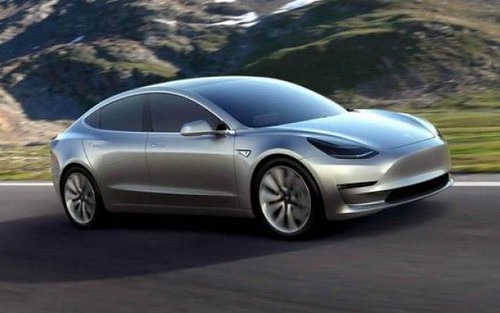
2. **Federal EV Tax Credit Expiration: Impact on Consumer Demand and Market Dynamics**The introduction of these cheaper Tesla models coincides directly with the expiration of the $7,500 federal tax credit for American buyers of most Tesla cars. This incentive had significantly reduced the effective purchase price of qualified electric vehicles, serving as a powerful catalyst for sales. The abrupt cessation of this credit has undeniably altered the purchasing calculus for prospective EV owners.
Tesla had reported record sales in the third quarter, a surge largely attributed to buyers expediting their purchases to capitalize on the $7,500 tax credit before its September 30 expiration. This rush created an artificial peak in demand, and analysts widely anticipate a subsequent slump in sales in the months following the credit’s cessation. The new pricing strategy for the Standard models is, in part, a response to this anticipated deceleration.
Without the federal tax credit, the base Model 3 and Model Y would have started at approximately $42,500 and $45,000, respectively. The new Standard models, therefore, represent Tesla’s effort to mitigate the impact of this lost subsidy by offering lower list prices. While the new models are still more expensive than their predecessors were with the tax credit applied, they nonetheless reduce the financial hurdle for a segment of buyers who may not have qualified for the credit due to income thresholds or who simply seek a lower starting price.
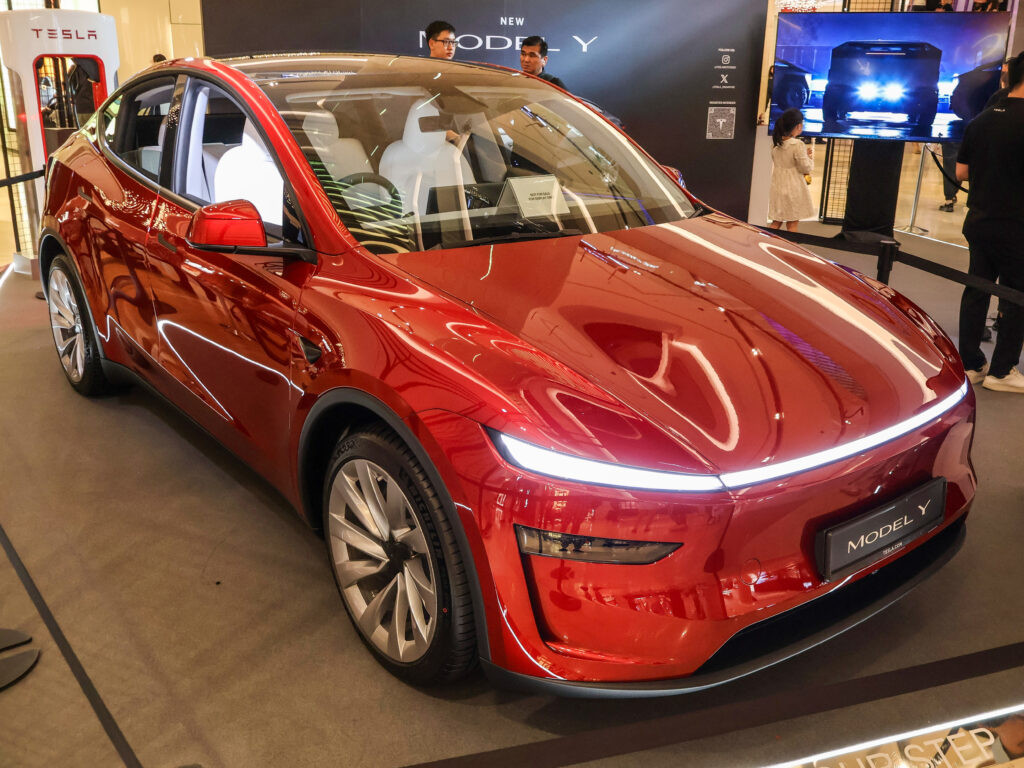
3. **Feature and Performance Adjustments in Standard Models: Analysis of Downgrades and Their Implications**
The reduced price points of the Model 3 Standard and Model Y Standard are accompanied by certain feature omissions and performance adjustments compared to their “Premium” counterparts. These changes are crucial for understanding the value proposition of the new models and how they differ from Tesla’s established offerings. According to Tesla’s official site, the Standard versions notably lack the eight-inch second-row touchscreen, a feature present in the more expensive models.
Audio systems also see a reduction, with the Standard versions featuring only seven speakers instead of the 15 speakers and a subwoofer found in the Premium models. Interior materials are also downgraded, moving from a cloth and “microsuede” combination advertised on upper-end models to a cloth-only interior. These changes reflect a clear strategy to achieve lower price points through component rationalization.
Furthermore, performance specifications are also adjusted. The Standard models will not achieve the same range on a full charge as the Premium versions, though they will offer slightly more range than the top-end “Performance” model. Acceleration, measured by 0 to 60 mph times, will also be slower for the Standard models. Additionally, they will feature “passive shock absorbers” as opposed to the more advanced “frequency dependent shock absorbers” found in the Premium models, signaling a compromise in ride comfort and handling characteristics.
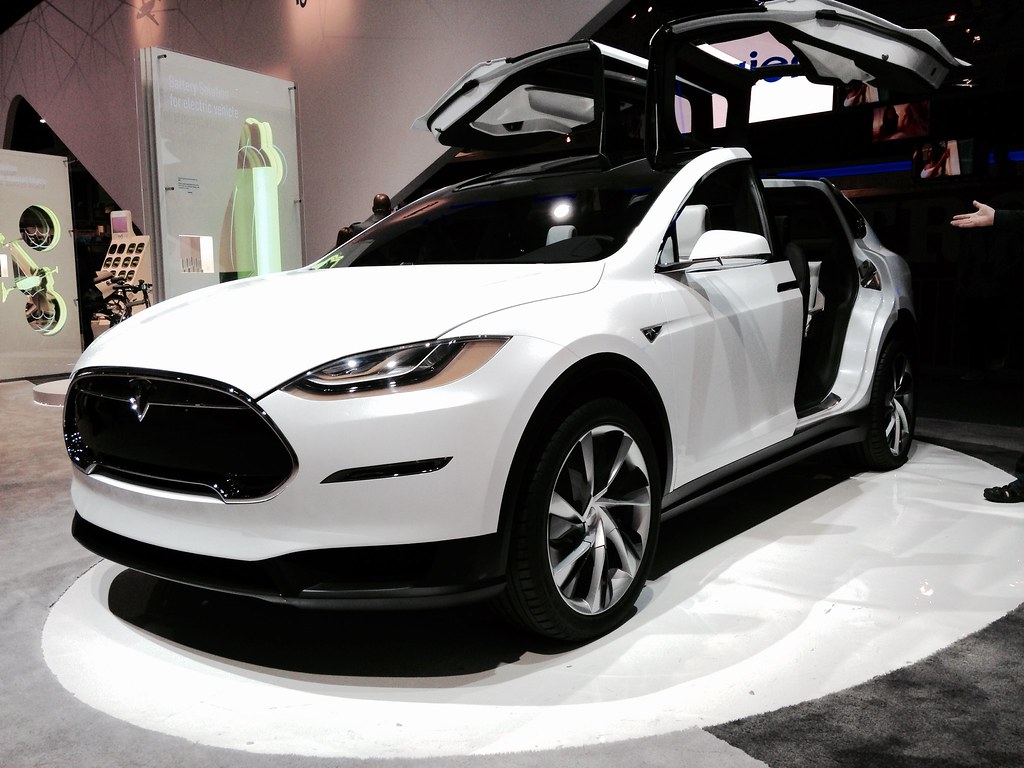
4. **Investor Sentiment and Stock Market Performance: Reaction to Tesla’s New Offerings**The announcement of the cheaper Model 3 Standard and Model Y Standard initially prompted a notable reaction from investors, impacting Tesla’s stock performance. Prior to the afternoon unveiling, shares of Tesla (TSLA) had been down approximately 1%. However, within an hour following the announcement, the stock declined further, settling about 4% lower.
This negative reaction suggests that investors may have been anticipating more aggressive price competitive offerings or perhaps an entirely new product from the automaker. There was “feverish speculation online” that Tesla might unveil a long-promised two-door sports car, the Roadster, or even a flying car, indicating a disconnect between investor expectations and the actual product release.
Some analysts and investors voiced disappointment, noting that the new models were essentially stripped-down versions of existing vehicles rather than completely new designs. Gary Black, managing partner of the Future Fund, an investment firm, suggested on X that “the volume generated will be mainly cannibalization from higher priced trims,” indicating skepticism about the net sales growth these new models would bring. This highlights investor concerns about potential margin compression and the lack of truly novel products in Tesla’s lineup.
Car Model Information: 2019 Honda Accord Sport 2.0T
Name: Tesla Model 3
Manufacturer: Tesla, Inc.
Production: 2017–present
Assembly: unbulleted list
Designer: Franz von Holzhausen
Class: Mid-size car
BodyStyle: Sedan (car)
Layout: unbulleted list
Related: Tesla Model Y
Motor: unbulleted list
Transmission: Single-speed fixed (9:1 ratio)
Battery: unbulleted list
ElectricRange: unbulleted list
Charging: unbulleted list
Wheelbase: cvt
Length: unbulleted list
Width: cvt
Height: unbulleted list
Weight: cvt
Caption: 2019 Tesla Model 3 Performance
Categories: 2020s cars, ANCAP large family cars, All-wheel-drive vehicles, All Wikipedia articles in need of updating, All Wikipedia articles written in American English
Summary: The Tesla Model 3 is a battery electric powered mid-size sedan with a fastback body style built by Tesla, Inc., introduced in 2017. The vehicle is marketed as being more affordable to more people than previous models made by Tesla. The Model 3 was the world’s top-selling plug-in electric car for three years, from 2018 to 2020, before the Tesla Model Y, a crossover SUV based on the Model 3 chassis, took the top spot. In June 2021, the Model 3 became the first electric car to pass global sales of 1 million.
A facelifted Model 3 with revamped interior and exterior styling was introduced in late 2023 for countries supplied by Gigafactory Shanghai and in early 2024 in North America and other countries supplied by the Tesla Fremont Factory.
Get more information about: Tesla Model 3
Buying a high-performing used car >>>
Brand: Tesla Model: Model 3
Price: $22,566 Mileage: 52,019 mi.
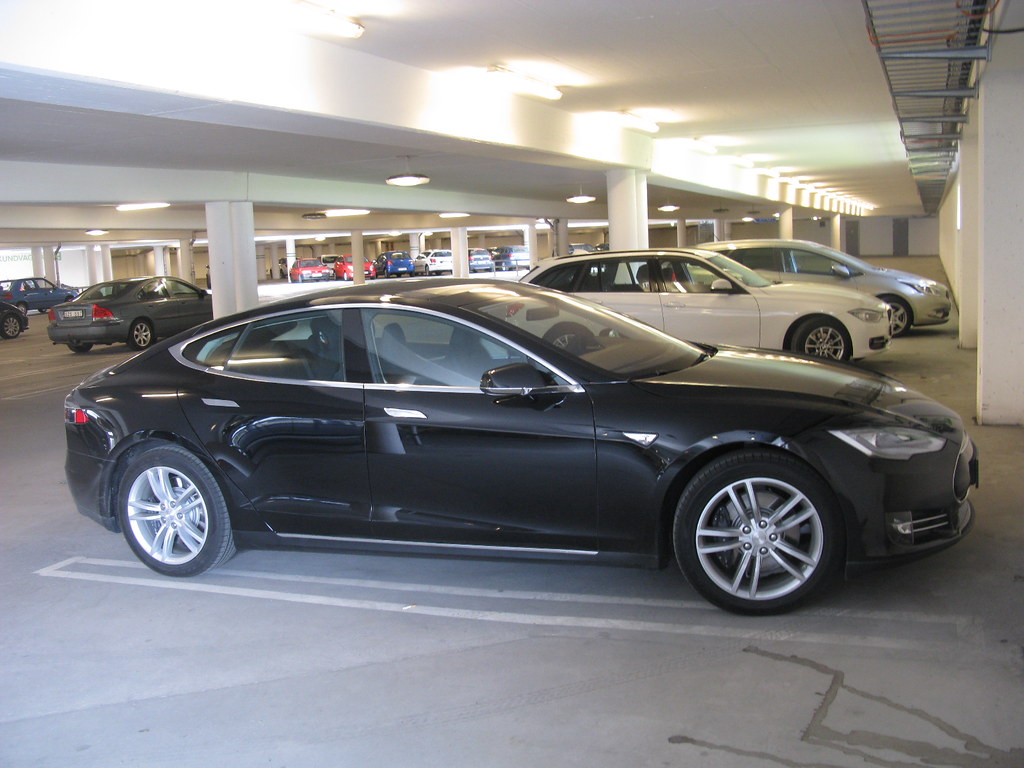
5. **Historical Trajectory of Tesla’s Affordability Pledges: A Review of Past Commitments and Current Realities**
The introduction of these “Standard” models, while a step towards affordability, comes against a backdrop of numerous unfulfilled promises by Tesla regarding even cheaper vehicles. For years, CEO Elon Musk has teased the prospect of a truly budget-priced EV, with discussions dating back to 2018 about a $25,000 model being delivered within a few years. This ambition was consistently reiterated, including at Tesla’s Battery Day in 2020, where Musk emphasized the necessity of affordable EVs to accelerate the transition to sustainable energy.
However, these self-imposed deadlines were repeatedly missed. The company’s focus shifted, with Musk prioritizing the development of self-driving technology and other ventures such as autonomous taxis and humanoid robots. This strategic pivot led to the cancellation of a planned budget-priced electric vehicle, which was slated for production in Mexico and expected to sell for around $25,000, as Musk decided to reallocate resources.
In a telling exchange with investors in October, Musk dismissed the idea of a $25,000 model without self-driving capabilities as “pointless” and “completely at odds with what we believe.” This commentary underscores a consistent tension between Tesla’s stated goal of mass affordability and its actual product development and pricing strategies, making the recent Model 3 and Y Standard introductions a measured, rather than revolutionary, step in addressing price sensitivity.

6. **The Broader Competitive Landscape: Price Strategies from Rival Automakers**Tesla’s move to introduce cheaper models is not occurring in a vacuum; it is part of a broader, intensifying competitive environment within the electric vehicle market. Other established automakers and new entrants are also aggressively pursuing price-competitive strategies, recognizing that affordability is a critical factor for widespread EV adoption. This dynamic is putting pressure on all players to adjust their pricing and product offerings.
Just prior to Tesla’s announcement, Hyundai demonstrated this trend by revealing plans to lower the price of its 2026 Ioniq 5 electric vehicles by an average of more than $9,000. The least expensive version of the Ioniq 5 is now listed at $35,000, making it directly competitive with some of Tesla’s offerings, particularly when considering its gasoline-powered Santa Fe model has a similar starting price. This illustrates a clear industry-wide push to make EVs more accessible.
Furthermore, General Motors and Nissan are also making strides in the budget EV segment. GM’s Chevrolet Equinox and the 2026 Nissan Leaf are slated to start at less than $35,000, offering competitive ranges of 300 miles between charges. GM is also expected to reintroduce the Chevy Bolt electric compact for $30,000 or less next year. These actions collectively demonstrate that the EV market is rapidly becoming more crowded and price-sensitive, compelling even market leaders like Tesla to adapt their pricing structures.
Read more about: Unlock Unbeatable Deals: 15 SUVs Languishing on Lots – A MotorTrend Buyer’s Guide to Maximizing Your Savings
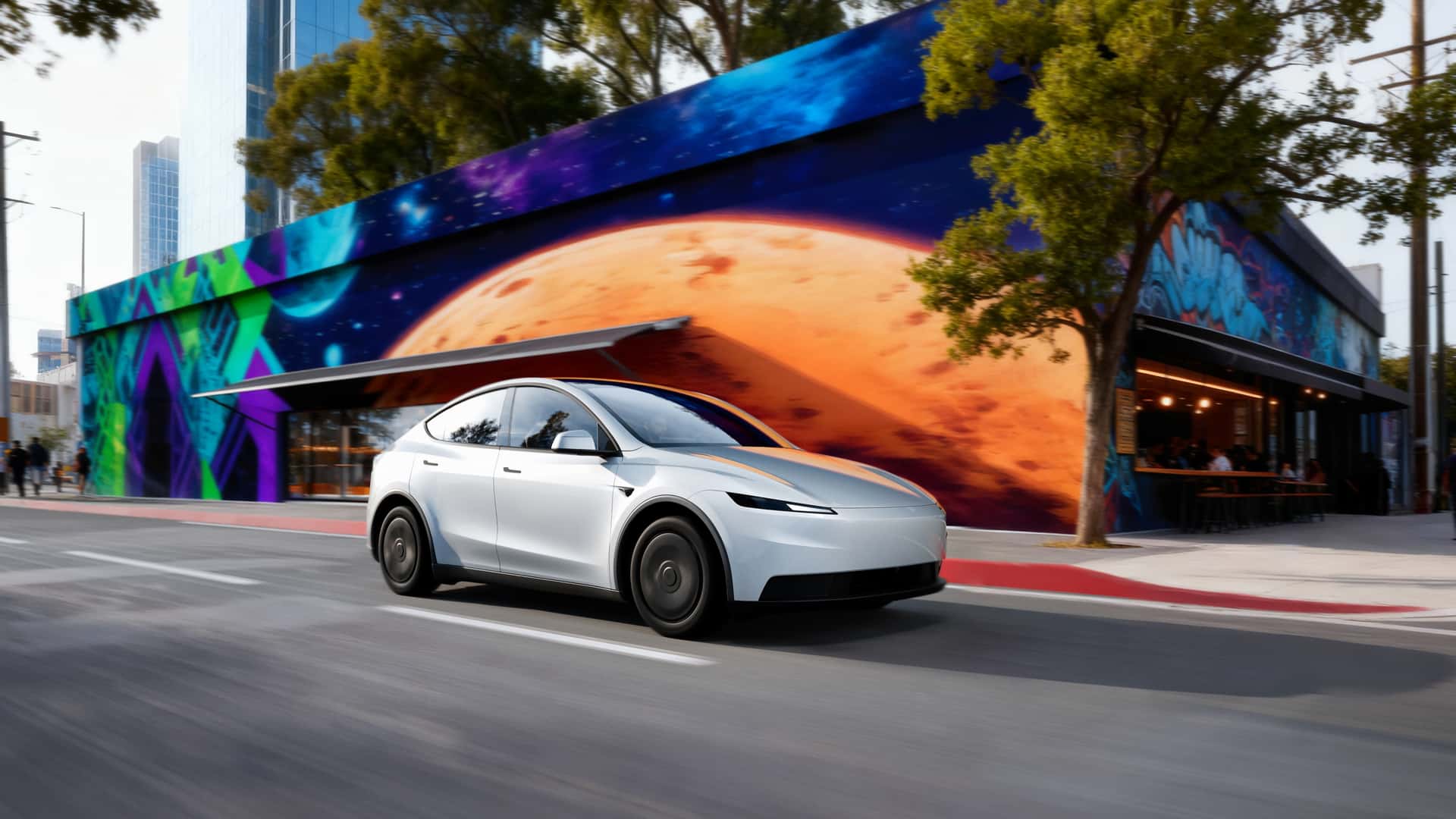
7. **Tesla’s Sales Performance in a Shifting Market: Navigating Q3 Records Amidst Prior Declines and Market Share Pressures**
Tesla’s recent sales performance presents a nuanced picture, characterized by both record-breaking achievements and underlying challenges. The company reported record global third-quarter sales, a significant milestone that, as previously noted, was largely fueled by American buyers rushing to purchase vehicles before the $7,500 federal tax credit expired. This surge, however, masks a more complex trend in Tesla’s overall market trajectory.
Despite this strong Q3 showing, Tesla had previously reported the two largest drops in sales in its history during the first two quarters of the year. This volatility indicates that while external incentives can temporarily boost demand, the company faces fundamental pressures. Although Tesla does not disaggregate sales figures by country, its annual report indicates that 46% of its total revenue originates from US sales and 21% from China, highlighting the critical importance of these markets.
The expectation of sharply lower sales in the US, following the tax credit expiration, is likely to result in excess production capacity at Tesla’s two US factories. Offering lower-priced models, such as the new Model 3 and Model Y Standard versions, is a direct strategy to utilize this excess capacity and stimulate demand. While Tesla still commands the largest share of the US EV market, that share has fallen below 50 percent, and global competition, particularly from Chinese automakers like BYD, is intensifying, with BYD poised to surpass Tesla as the world’s largest EV seller.
The preceding analysis meticulously examined Tesla’s strategic shifts in pricing and product offerings, set against the backdrop of expiring federal incentives and intensified market competition. We delved into the specifics of the new ‘Standard’ models, their implications for new car sales, and the broader challenges posed by a maturing electric vehicle market. Now, we pivot to explore the more expansive ramifications of these developments, extending our focus to the influence of CEO Elon Musk’s public activities, the unprecedented depreciation observed in used Tesla models, the evolving dynamics of the pre-owned EV market, and the persistent regulatory hurdles confronting the company’s advanced technologies.

8. **The Impact of Elon Musk’s Divisive Public Stance on Tesla’s Brand and Sales**Beyond market economics and product specifications, Tesla’s brand and, by extension, its sales performance have become increasingly intertwined with the public persona and political engagements of its CEO, Elon Musk. His high-profile political activities, including his association with the Trump administration’s Department of Government Efficiency and his vocal support for certain right-wing political candidates in Europe, have demonstrably generated significant backlash. This has manifested in widespread protests at Tesla dealerships and instances of vandalism across the United States and Europe.
The trajectory of Musk’s political alignments, including his subsequent split from former President Donald Trump, has not mitigated these negative repercussions; in fact, it may have further complicated consumer perceptions. While Trump had previously encouraged Americans to purchase Tesla vehicles, the eventual rupture in their public relationship could have alienated a segment of Trump’s supporters who might otherwise have been inclined toward the brand. This dynamic underscores how the personal actions and political stances of a company’s leader can translate into tangible market and reputational challenges, impacting consumer sentiment and loyalty.
Industry analysts have explicitly linked Tesla’s brand struggles to Musk’s increasingly divisive public stance on political and governmental issues. This connection is not merely anecdotal; S&P Global Mobility reported an 11% dip in registrations for Tesla vehicles in the US in January compared to the previous year. While Tesla continues to hold the largest share of the US EV market, this share has significantly contracted, now standing at 42.5%, representing a a 12% drop compared to the prior year. This decline signals a broader softening of sentiment towards the brand, moving beyond traditional automotive performance metrics.
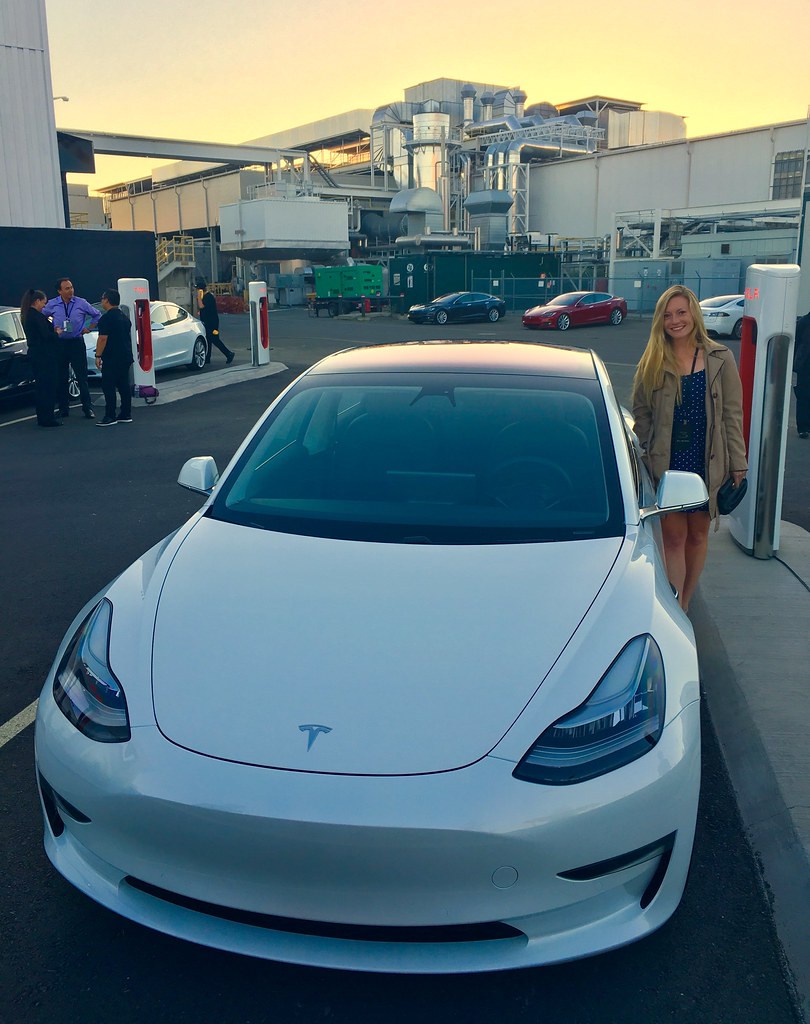
9. **Accelerated Depreciation of Used Tesla Models: A Market Anomaly**The depreciation of Tesla vehicles in the used car market presents a striking contrast to broader automotive trends and signifies a significant challenge for existing owners and for the brand’s long-term value proposition. While the overall electric vehicle category has experienced price declines, falling 4.8% year over year, internal combustion engine cars and trucks have, paradoxically, seen their prices increase by 5.2% over the same period. This divergence highlights a unique vulnerability within the EV segment, exacerbated by Tesla’s specific market strategies.
Within the EV category, Teslas have consistently recorded the steepest declines in value. Data from iSeeCars, a prominent automotive research site, reveals that a Tesla Model S in June 2025 was valued $8,768 less than it was in June 2024, marking a substantial 15.8% drop. The Model X experienced a similar fate, with its value plummeting by $9,544, or 15.5%, over the identical timeframe. These figures underscore a rapid erosion of resale value.
Further analysis by iSeeCars reinforces this trend, noting that Tesla’s used car prices dropped 10.1% year over year in March, marking the largest decline among top auto brands experiencing falling values for 1- to 5-year-old cars. The Model S sedan, specifically, recorded the most significant year-over-year price drop across all models analyzed, losing 17.2% of its value, which equates to nearly $10,000 in a single year.
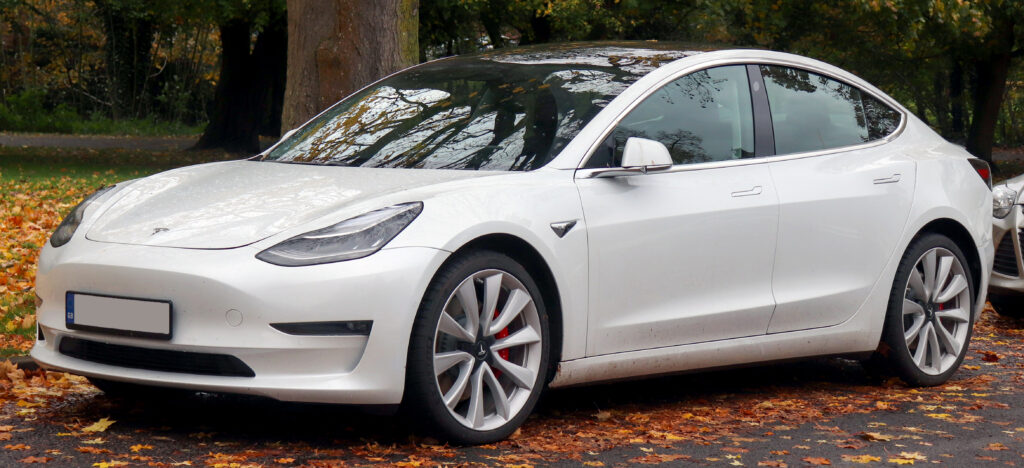
10. **Diving Deeper: The Specifics of Tesla’s Used Model Value Erosion**The impact of depreciation is not uniform across Tesla’s lineup, though all models have felt the downward pressure. The Model Y SUV, Tesla’s volume seller and once hailed as the “best-selling car in the world,” saw its average price fall by 13.1% to $30,611 in March. Similarly, the Model 3 sedan, another core offering, shed 10.9% of its value, bringing its average price to $26,084. These figures highlight the pervasive nature of value erosion across the company’s most popular vehicles.
Recent data from CarGurus further illustrates this unprecedented shift, revealing that the average price of a used Tesla has, for the first time, fallen below the average for the overall US used car market. While the broader used car market experienced a modest increase of 1.22% year over year, Tesla’s average declined by 4.59% over the same period, settling at $27,814 compared to the market average of $28,039. This represents a significant reversal for a brand that historically commanded higher-than-average values.
The newer addition to Tesla’s fleet, the Cybertruck, has also experienced a precipitous decline, recording the steepest annual drop with prices down more than 30% to an average of $83,963, despite exhibiting small gains in recent months. Other models have not been spared, with the Model S down 22.61% to $26,534 and the Model X falling 16.8% to $37,747. Even the Model 3 and Model Y, Tesla’s most accessible and highest-volume vehicles, saw declines of 8.04% and nearly 12% respectively. This erosion of value across the product range is a critical factor pulling the brand’s overall average lower.
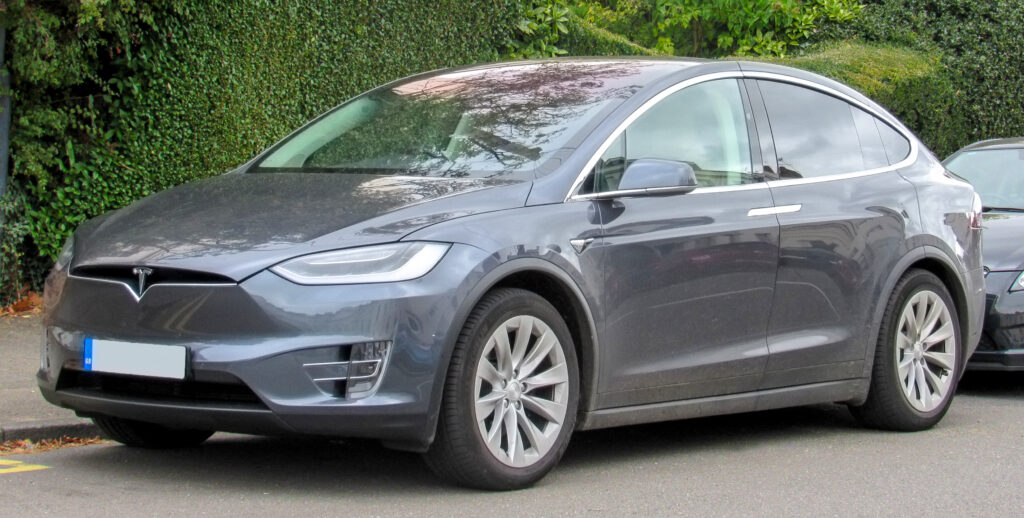
11. **Evolving Dynamics in the Broader Used EV Market: Beyond Tesla’s Figures**Tesla’s depreciation trends are not entirely isolated but rather a magnified reflection of broader shifts occurring within the pre-owned electric vehicle market. The growth rate of used EV market share has seen a dramatic plummet, settling at just 14.2% in the past year, a stark contrast to the robust 98% growth rate observed in 2024. This substantial deceleration indicates a rebalancing of supply and demand, with more owners selling EVs and boosting supply.
This influx of used EVs, coupled with a potentially diminishing appetite from buyers, is poised to create further downward pressure on prices. The situation is compounded by the impending expiration of the $4,000 incentive for buying a used EV on September 30. The cessation of this credit is widely anticipated to push prices considerably lower, removing a key financial sweetener for prospective second-hand EV purchasers. Karl Brauer, Executive Analyst at iSeeCars, suggests that these trends signal a market nearing saturation, stating, “Everything from market share to pricing suggests EV demand has peaked and will likely decline in the coming years.”
While the broader used car market has witnessed a general rise in prices—up 3.7% over the last five months—Tesla’s used prices stand out as a notable exception, falling 5.3% in July alone. This divergence can be attributed to several factors, including a decrease in demand specifically for Teslas, partly due to the brand’s recent reputational challenges. Additionally, electric vehicles inherently tend to depreciate more quickly than their internal combustion engine counterparts, a characteristic that is particularly pronounced in a rapidly evolving technological landscape where newer models constantly offer enhanced features and range.
Read more about: The 11 Worst Depreciating Sedans: What Resale Charts Reveal for Savvy Investors
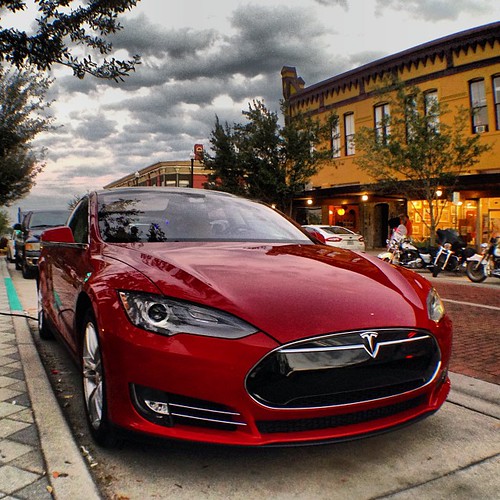
12. **Opportunity for Buyers: Leveraging Depreciation in the Pre-Owned Tesla Market**For discerning consumers, the significant depreciation in used Tesla models presents a compelling opportunity for affordable entry into electric vehicle ownership. With brand-new Teslas often beyond reach, the used market now offers access to these technologically advanced vehicles at discounted rates, opening the door for a wider demographic to experience Tesla’s performance and innovation without substantial initial investment.
Tesla itself facilitates this by maintaining a used vehicle inventory, showcasing the dramatic value shifts. For instance, a high-performance 2018 Tesla Model S, which originally retailed for an MSRP of $74,500, can now be found for as low as $25,600 directly from the company. Similarly, a 2018 Model X midsize electric SUV, with an original MSRP of $84,000, is available for as low as $29,800. These figures illustrate how depreciation has made once premium vehicles surprisingly attainable, often falling below the average new vehicle price (over $47,000, according to Cox Automotive).
The Model Y, in particular, stands out as an excellent deal in the current used market. Once declared a “best-selling car in the world,” it offers a compelling balance of utility and performance. With a larger quantity of older Model Ys now available, their heavy depreciation makes them highly competitive against newer electric SUV nameplates. Online platforms like Carvana list 2022 Tesla Model Ys for as low as $29,990, while CarMax offers 2020 Model Ys for as low as $24,879. This is in stark contrast to a brand-new Model Y, which costs $44,990 before taxes and fees, or approximately $37,490 after the now-expired $7,500 EV tax credit. Eligible buyers can also claim a $4,000 used EV tax credit for models two years old or older priced at $25,000 or less, further enhancing their appeal.
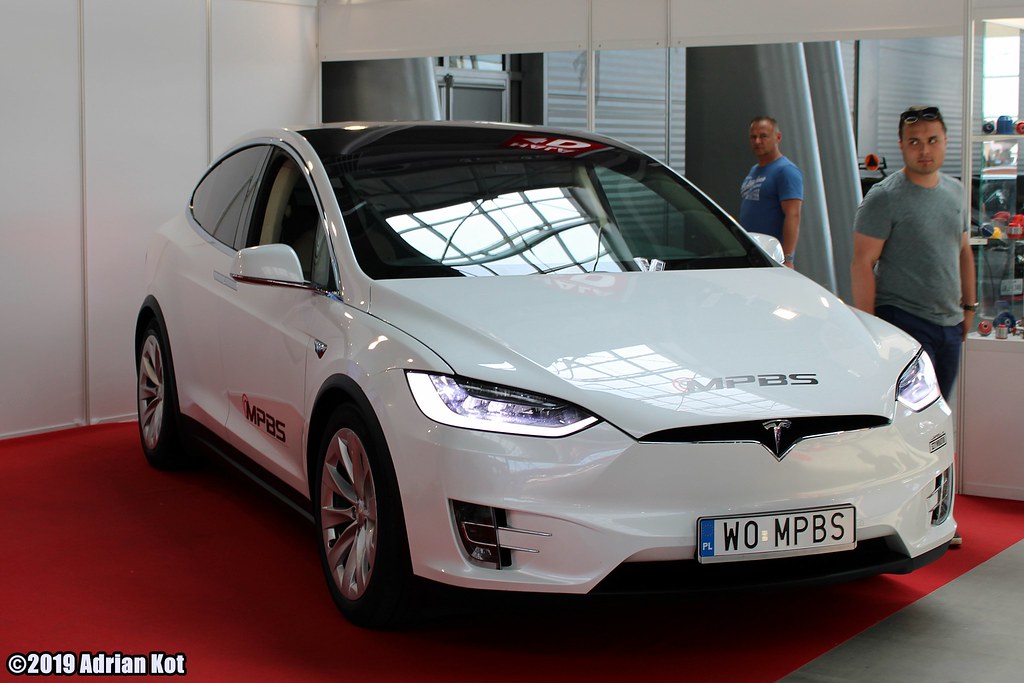
13. **Navigating Regulatory Scrutiny: Tesla’s Full Self-Driving System Under Investigation**Concurrent with its market and branding challenges, Tesla faces escalating regulatory scrutiny concerning the safety and operational reliability of its advanced driver-assistance systems. The National Highway Traffic Safety Administration (NHTSA) has launched an investigation into nearly 2.9 million Tesla vehicles equipped with both “FSD (Supervised)” and “FSD (Beta)” versions of the company’s Full Self-Driving system. This extensive probe was initiated following alarming reports detailing traffic safety violations linked to the system’s performance.
The core concern stems from reports indicating that vehicles operating with FSD have engaged in dangerous maneuvers, including driving through red traffic signals and initiating lane changes directly into opposing traffic. NHTSA’s filings state both FSD versions require “a fully attentive driver who is engaged in the driving task at all times,” raising questions about whether the system’s capabilities are being appropriately managed or exceeding safe operational parameters without adequate driver intervention.
To date, NHTSA has received reports of 58 safety violations directly linked to Tesla vehicles utilizing FSD. These incidents are not minor; they encompass more than a dozen crashes and fires, alongside reports of 23 injuries. Such a volume and severity of reported incidents underscore the gravity of regulatory concerns and highlight potential safety risks associated with widespread deployment of these advanced, yet evolving, autonomous driving features. These investigations are critical for evaluating the efficacy of Tesla’s technology and its adherence to safety standards.

14. **Broader Regulatory Challenges and Safety Concerns Facing Tesla’s Autonomous Technologies**The NHTSA investigation into Full Self-Driving is not an isolated incident but part of a broader, sustained regulatory inquiry into Tesla’s automated driving systems that has spanned more than three years. This includes investigations into dozens of crashes that consistently raised safety concerns, such as a fatal Seattle-area Tesla crash in 2024 involving Full Self-Driving that killed a motorcyclist. These ongoing probes collectively question the fundamental ability of Tesla’s automated system, and others like it, to operate safely on a widespread scale without undue risk to public safety.
Beyond FSD, Tesla’s “summon” technology, which allows vehicles to drive to a driver’s location, has also been under NHTSA investigation following reports of fender benders in parking lots. Furthermore, a separate probe initiated last year examined driver-assistance features in 2.4 million Teslas after multiple crashes in fog and other low-visibility conditions, one of which tragically involved a pedestrian fatality. These multiple investigations suggest a systemic concern about the safety protocols and reliability of Tesla’s driver-assistance and autonomous features.
Adding to the regulatory pressure, NHTSA launched another investigation in August into allegations that Tesla has failed to promptly report crashes to the agency as required by its regulations. This raises questions not only about the safety of the technology but also about the company’s compliance with reporting mandates. CEO Elon Musk faces considerable pressure to demonstrate that the latest advancements in these features have effectively addressed these persistent problems, particularly as he has promised to deploy hundreds of thousands of self-driving Tesla cars and Tesla robotaxis on roads by the end of the next year. This ambitious timeline, against a backdrop of serious regulatory challenges, highlights significant stakes for both Tesla and the future of autonomous driving.
The confluence of Tesla’s revised pricing strategies, the unique depreciation trajectory of its used models, the shifting landscape of the broader EV market, and the intensifying regulatory scrutiny over its autonomous technologies paints a complex and challenging picture for the company. While the introduction of more affordable models represents a direct response to market demands and the expiration of incentives, it concurrently exerts downward pressure on resale values and signals a period of significant re-evaluation for Tesla’s long-term market position and profitability. The path forward for the EV giant will undoubtedly involve navigating these multifaceted challenges, balancing innovation with practicality, and restoring confidence in both its financial outlook and its technological advancements amidst an increasingly competitive and scrutinized global automotive industry.



